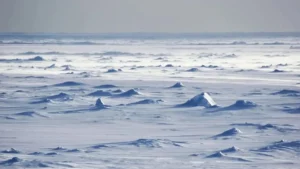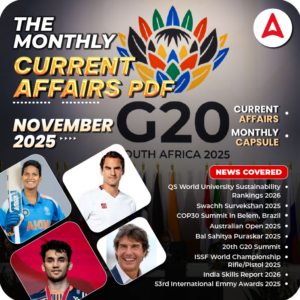The World Meteorological Organization (WMO) has raised a serious warning about climate change. According to a recent report, there is a 70% chance that global temperatures will cross the 1.5ºC limit above pre-industrial levels between the years 2025 and 2029.
What is the 1.5ºC Limit?
In the Paris Climate Agreement (2015), world leaders agreed to try and stop the Earth’s temperature from rising more than 1.5ºC above the levels seen before the Industrial Revolution (1850-1900). Going beyond this limit could lead to serious effects like stronger heatwaves, floods, droughts, and rising sea levels.
Why this Report Matters?
The WMO’s report titled ‘‘Global Annual to Decadal Climate Update (2025-2029),” says that the Earth’s average temperature between 2025 and 2029 could be between 1.2ºC and 1.9ºC above pre-industrial levels. This prediction is based on current climate trends.
Also, there is an 80% chance that at least one of the next five years will break the record set in 2024, which was already the hottest year ever recorded.
Slow Climate Actions by Countries
Out of 195 countries in the United Nations Climate group, 180 countries still haven’t submitted their new climate actions plans (called NDCs) for the years 2031-2035. These plans are important to help reduce pollution and control global warming. The next big climate meeting, COP30, is coming up soon and countries are being urged to act faster.
Possible Future Changes
If the Earth continues to warm:
- Heatwaves, floods and droughts will get worse
- Ice sheets and glaciers will melt faster
- Sea levels will rise more quickly
- Oceans will become hotter
- Air pollution may worsen in places like India
There is even a 1% chance that one year before 2030 may cross the dangerous 2ºC mark, which would bring very severe changes.
Arctic and Monsoon Changes
The Arctic region is warming faster than the rest of the world. Between 2025 and 2029, its temperature during winter could rise 2.4ºC above the recent average. This will cause more melting of sea in areas like the Barents Sea and Bering Sea.
In South Asia, the report says the region will mostly remain wetter than average until 2029. But not all monsoon seasons may follow this trend.
Why Climate Monitoring is Important?
WMO Deputy Secretary-General Ko Barrett said the report gives no signs of improvement and warned out of harmful effects on economies, nature and daily life. He said constant monitoring and weather predictions are necessary to help leaders make smart decisions.



 Weekly Current Affairs One Liners 08th t...
Weekly Current Affairs One Liners 08th t...
 Which Indian City is Known as the Footwe...
Which Indian City is Known as the Footwe...
 Which Desert is known as the Cold Desert...
Which Desert is known as the Cold Desert...







